By Christopher R. Bartocci –
Shotguns have always been a fighting weapon for the US military although not often seen. They serve roles such as defense, offensive, breaching as well as deploying less than lethal ammunition such as bean bag loads. In law enforcement, every car had a shotgun.
That has changed in favor of the patrol carbine. Though is that one projectile is easier to account for than 8 or 9. Law enforcement also faces the threat of suspects/active shooters wearing body armor. In this case the penetration power of the 5.56mm round is certainly more appropriate than buckshot or slugs. High capacity magazines with 5.56mm ammunition put a patrol officer in the position to deal with an active shooter when traditionally armed officers with shotguns would have to wait for SWAT to arrive. However in military application, the shotgun stands out as devastating firepower at close range. In urban combat, shotguns are used for breaching. What this means is blowing locked doors off of their hinges or blowing the lock out so the soldiers can gain entrance.
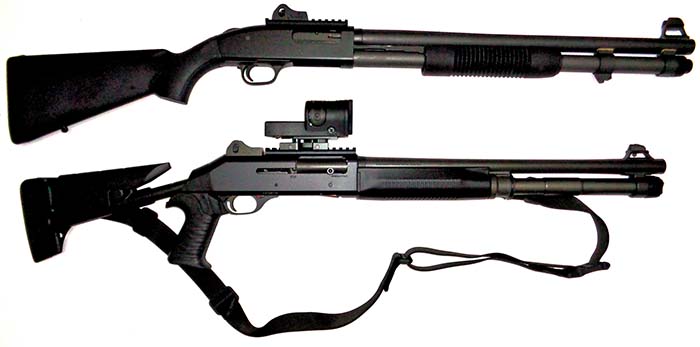
Over the last 50 or so years, shotguns have been visible in military operations such as Vietnam, Panama, Gulf War 1 as well as the Global War on Terrorism. Looking at this time period you may think of a tunnel rat in Vietnam with a sawed off Ithaca shotgun. Today there are several shotguns in service but what we will look at are two of the general purpose shotguns in current service. The Mossberg 590/590A1 pump action and the Benelli M1014 semi-automatic shotgun are the most prevalent in the inventory.
As early as 1979, the Mossberg 500 and 590 pump action shotguns were accepted when they successfully passed the Mil Spec 3443 testing. In 1992, Mossberg was awarded the contract for the 590A1 shotgun. This contract was spearheaded by the Navy. In the mid-2000’s the shotgun would be made available to the commercial market. Two major changes of the 590A1 over the predecessors is the use of an aluminum trigger guard and safety.

The 590 has a 18.5 inch barrel with a improved cylinder choke and a bead front sight. The magazine holds 6 rounds of 2 3/4 or 3” magnum 12-gauge shotgun shells. The stock and forgrip are made of black polymer. This is superior to wood in that the material does not swell, splinter or rot. It is impervious to the elements. The receiver is manufactured from aluminum and anodized black. The shotgun is 39.5 inches weigh in at 6.75 pounds. These may also be found with just a pistol grip and no stock. These are often carried as secondary weapons for breaching purposes or extreme close combat situations.
The pump action 590A1 as previously stated has a aluminum trigger housing and safety lever rather than polymer. These can be had in several configurations as well. The combat shotgun has a 9 round capacity and can also fore 2 3/4 or 3 inch 12-gauge shotgun shells and a cylinder bore choke. The barrel is parkerized black and the stocks are polymer in black color. The receiver is also manufactured from aluminum and anodized black. The 590A1 has a 20 inch barrel with a bead front sight. This model also may be seen with Ghost Ring sights which is a rear peep sight and a front sight post similar to that of an M16 rifle. None were shipped in this configuration but some shotguns have been converted to have this sight feature. All leave with a front bead. The shotgun weighs in a 7.25 pounds and an overall length of 41 inches. This 20 inch barrel mode will also accept a M9 bayonet. There is a bayonet lug and the front o the bayonet attaches to the magazine cap. This model also may be found with an 18.5 inch barrel or with a pistol grip rather than stock.

Loading procedure is to load the magazine tube to capacity. Push upward on the action lock lever to release the bolt. Cycle the action fully and now there is a round in the chamber. The safety is located on top rear of the receiver. It is a sliding button. With the shotgun being pump action, it may fire all types of ammunition without cycling issue. Unlike autoloaders which require full powered loads, the pump action can fire low recoil loads and less than lethal shells.
Mossberg provided a T&E shotgun. The one requested was the 590A1SPX (50771). This shotgun has all the bells and whistles. It has Ghost Ring sights which the rear sight is mounted to a Mil-Std-1913 rail. The rear sight may be removed and an optic such as a reflex sight can be mounted. The barrel was ported right behind the front sight assembly. The front sight is provided with a reddish fiber optic sight. This was very visible in daytime conditions. The shotgun was provided with a M9 bayonet which mounted to the shotgun with ease. The shotgun was what you would expect of a military grade shotgun. Strong, robust and simple. The shotgun was tested with Winchester OO Buck, Federal OO Buck, Hornady TAP, Winchester 1oz slug, Federal Low Recoil slug and Hornady TAP High Velocity slug. Every round cycled perfectly. No mechanical issues whatsoever. It is nice being able to use Low Recoil ammunition. You really sacrifice little performance. The shotgun did hit a steel gong at 100 yards with ease.

Both of these models may be seen in the hands of all branches of the military. Mossberg has sold more than 100,000 shotguns to the U.S. military. However the Marines took it one step farther. They wanted a semi-automatic shotgun. On May 4, 1998, a solicitation (DAAE30-98-R-0401) was issued to Picatinny arsenal for a new shotgun. This was a much more modernized semi-automatic combat shotgun. The requirements put out were that the shotgun must fire 2.75-inch 12 gauge slugs (100 to 125 meters accurately) and 00 Buckshot (40 meters accuracy). The shotgun must have a length up to 41.75 inches and be capable of reconfiguring to 36 inches or less. The maximum weight allowed was 8.5 pounds with the desire to be six pounds unloaded. The shotgun will be equipped with Low Light Level iron sights and standard Mil-Std-1913 rail on the top of the receiver to permit use of enhanced sighting systems. The project was called the Joint Services Combat Shotgun (JSCS) and the weapon would go on to be classified as the M1014. Deliveries began in 1999 to the Marine Corps. This shotgun is also used by special forces.

Out of this competition came the most reliable, durable and versatile combat shotgun in the world. This shotgun really cannot be compared to the Mossberg 590/590A1. They were procured for different missions. The Benelli M4 Super 90 was type classified as the M1014 shotgun. This semiautomatic was Benelli’s first shotgun that did not use their trademark inertia operating system. This new system is called ARGO or Auto Regulating Gas Operated system. This consists of two short stroke operating rods using two stainless steel pistons which are touted as being self-cleaning. The operating mechanism is located just in front of the 3 inch chamber to function opposite of the bolt. The ARGO system uses only four components which are two symmetrical shrouds containing two small steel gas pistons. The ARGO gas system eliminates the complexities in using a standard piston mechanism with all its additional parts. The ARGO system is self regulating which will allow the shotgun to function with a wide array of shotgun ammunition. The bolt itself, is a rotary lock mechanism. The bolt runs in a cam track to lock and unlock. The bolt is also chrome plated. The only drawback to this system is most Less Than Lethal ammunition must be cycled manually.

The way the mechanism works allows rapid ammo change. For example your M1014 is loaded with Buckshot and a target appears 100 yards away and you need to transition to a slug. Unlike a traditional shotgun you have to eject the chambered round and remove the round on the carrier by hand, the M1014 ejects the round in the chamber by retracting the bolt. The round in the magazine will only be released if the shotgun is fired or if you manually release it by way of the cartridge drop lever. Now after the shell in the chamber is ejected you just drop the slug shell in the receiver and release the bolt handle. The loading procedure for the M1014 is to insert 7 rounds in the tubular magazine, push upward on the cartridge drop lever. This releases the round to the carrier. The retract the bolt and release allowing the rotating bolt to chamber and lock the bolt into battery. You may now insert another round into the magazine.
The M1014 has a two position folding stock and a 18.5 inch cylinder bore barrel. The safety is a conventional cross-bolt type in front of the trigger guard. The bore, chamber and bolt are hard chrome plated which permits fast and easy cleaning. The receiver is manufactured from aluminum and anodized black. The sights are Ghost Ring sights which are peep sights, similar to that of an M16. In front of the rear sight is a Mil-Std-1913 rail for mounting optics. This shotgun is well suited for a dot-type optic such as a Trijicon Reflex, EOtech or Aimpoint sight. The t&e shotgun was equipped with a Trijicon Reflex 1x42mm sight. The magazine holds 7 shotgun shells of either 2 3/4 or 3 inch magnum loads. However the shotgun can potentially carry a load of 9 shells. One would be in the chamber and the other is loaded on the carrier. The M1014 weighs 8.4 pounds with a length of 34.8 inches.
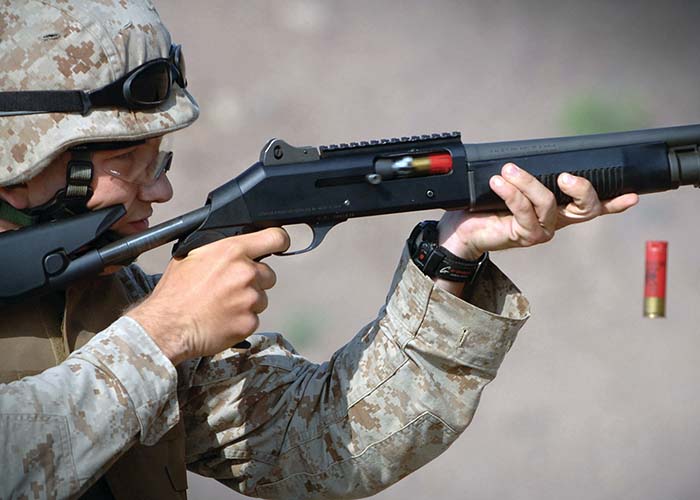
The T&E provided from Benelli is pristine. This is what you would expect from the fine Italian gun maker. Keep in mind the MSRP of the Mossberg is between $500 to $900 depending on the model, the M1014 has an MSRP of $2399 so you expect allot more out of the Benelli M1014. Fit and finish is flawless. The bolt glides rearward like the hammer on a Colt Python! This author has had a significant amount of experience with the M1014. In testing over the years this shotgun was exposed to brisk upstate New York winter with -13°F and -30 wind-chill. The shotgun cycled all standard OO Buckshot and slugs. You could feel the action work and could tell it was slower than normal but it never skipped a beat. It would not fire the low recoil loads, the M1014 would short stroke. The test shotgun has seen well over 500 rounds without issue.
Another role the shotgun serves is for breeching doors. Whether it be search warrant or a military unit clearing buildings, the operators come across locked doors. Heavier doors cannot be kicked in. So the muzzle of a shotgun is placed over the lock whether it be a dead bolt or standard lock and then the shotgun is fired blowing out the lock. Occasionally it may take two or three shots. Also the operator can blow the door off the hinges as well. The muzzle is placed in the location of the hinges and blows the hinges out, of the door can be kicked in. This can be done with a standard muzzle but is better handled with a breaching choke tube. The breeching choke tested was the Carlson Choke Tubes, LLC. Tactical Breecher Muzzle Brake (model 84130). The teeth on the muzzle enable the choke tube to grip the door/wall and the ports allow pressure to escape from the side so the shooter is not blown back away from door/wall. Both slugs and Buckshot can be used for breeching. There are specific rounds for breaching as well. Looking at this specific breaching choke, it has more porting than most to allow more recoil reduction and helps eliminate some of the back pressure that would kick back the shotgun into the shooters hands as well as the construction allows all loads to be used including slugs and buckshot loads.
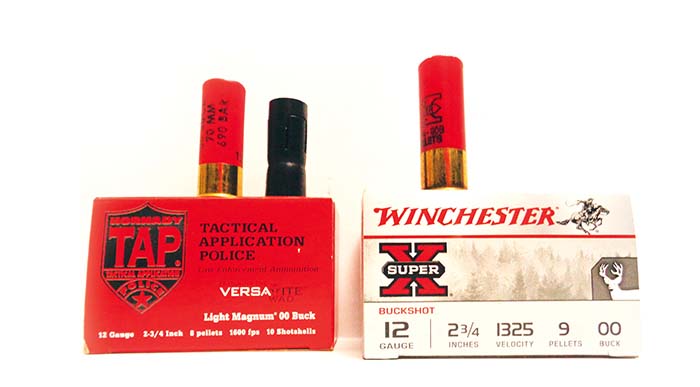
Does the average shooter need one of these Benelli M1014 shotguns, of course not. It is a steep price tag but if you want the finest combat shotgun in the world it is well worth the money. The Mossberg 500/590A1 shotguns offer all the tactical benefits at a price within grasp of most shooters. This is one of those time where you really cannot compare the two shotguns. They were designed for different purpose with different mission in mind and they both truly shine. Also fortunately they are both available in the commercial market. As long as you do not live in an occupied state which restricts civilian ownership of these “assault” shotguns!
In the U.S. military, the preferred shotgun round is OO Buck with 9 pellets. Winchester/Olin is the major supplier. They can have green or red hulls and are high brass. The OO buck is the most effective anti-personnel round out there. However the slug does also have its place and are also in use. Not so much as anti-personnel, although it could be but more for breaching buildings. For instance you come across a locked door, the soldier can fire a slug into the lock area and see if he can blow the lock out to open the door. If that does not work he will aim at the location of the hinges and blow the door off the hinges. If the soldier has to shoot through barriers the slug is an excellent option. They do a good job on car doors and going through mud huts!
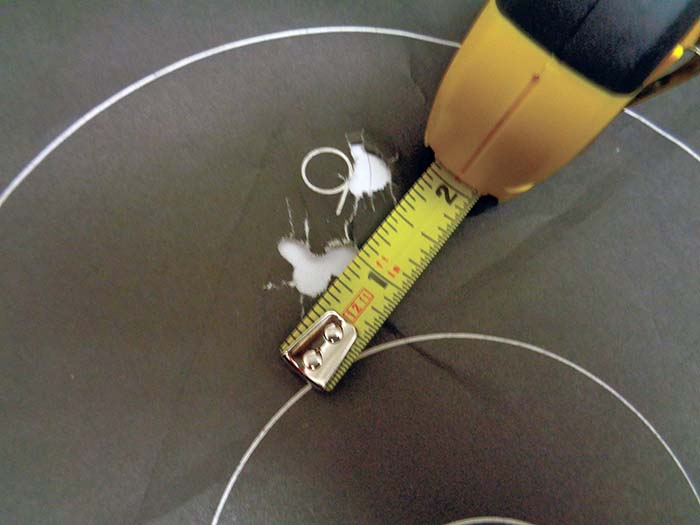
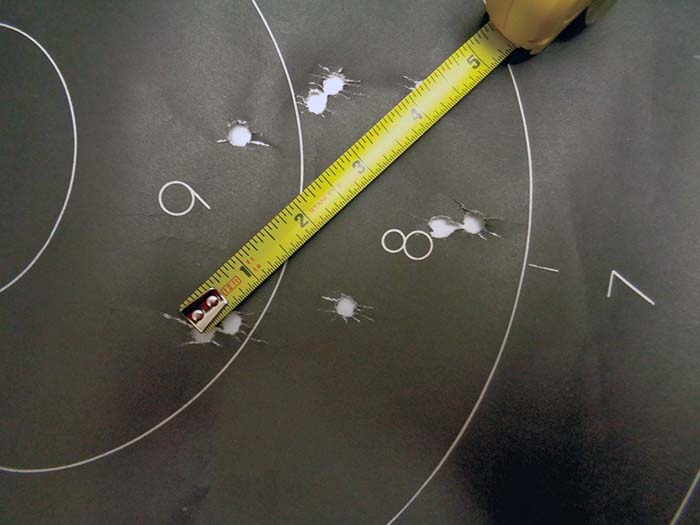
Although there is an expectation in a combat zone for “collateral damage”, law enforcement does not have that option. Any police officer who carried a shotgun with OO Buck must account for each pellet when he pulls the trigger. Often you will get that one flyer pellet that may miss the target and possibly injure a innocent bystander which can , will and has happened. Hornady manufacturing has a excellent line of T.A.P. or Tactical Application Police ammunition. This ammunition offers law enforcement a wide array of rifle, pistol and shotgun ammunition to fit their agencies individual needs. This ammunition is sold to Law Enforcement/military only but as you can imagine it finds its way to the commercial market.
They offered two loads. First is a 12-gauge Reduced Recoil load (blue hull) which has 8 OO buck pellets firing at a velocity 991 feet per second coming out of an 18.5 inch barrel. This is designed for slide action shotguns which does not require the higher pressures to cycle the action. The second is the 12gauge TAP Light Magnum OO Buck load. This also has 8 OO buck pellets but fires a higher 1428 feet per second out of a 18.5 inch barrel. Both of these loads were tested in the Mossberg 500A1 shotgun and there was no undoubtedly a noticeable difference in recoil. The low recoil did not cycle reliably in the M1014 but cycled perfectly with the Light Magnum Load.
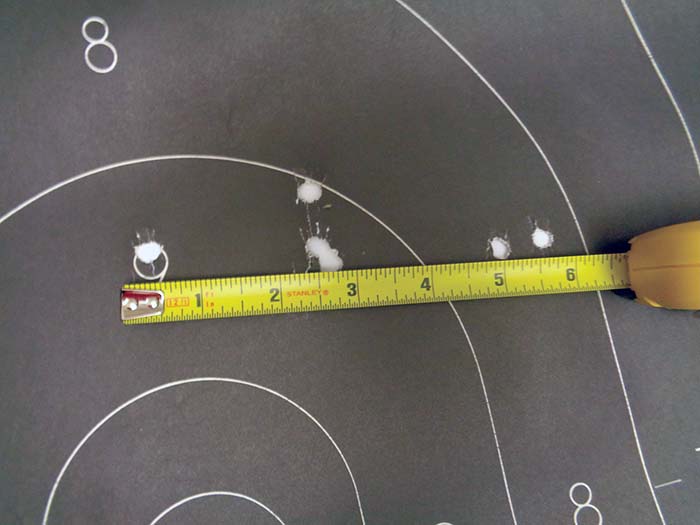



The benefits do not stop with this TAP load here. The shot patterns are significantly tighter than that of a standard OO buck load. This is due to the shot cup. As previously mentioned the Police officer has to account for every projectile. With a tighter pattern the chance is greatly reduced of having a flyer. Of course nothing is absolute but there is a major difference. Targets were set up at 10, 15 and 20 yards. First a standard Winchester LE OO Buck round (2 3/4 inch) and then the TAP round and the diameter of the shot patterns was measured. At 10 yards the Winchester load opened up approximately 4 inches in diameter. The TAP round was shot at the same distance with an approximate diameter 1.75 inches. Major change! At 15 yards the Winchester round was fire with a diameter of about 7 inches. The TAP was tested at the same range giving a diameter of approximately 3 inches with one flyer. If you want to count the one flyer it is approximately 5.5 inches. Still a major difference either way. The last test was a 20 yards. The Winchester load had an approximate diameter of approximately 8.75 inches with the TAP coming in at approximately 6 inches.

Hornady also offers a 1oz rifled slug in both low recoil and magnum loads. Accuracy was measured by hitting a steel target at 100 yards with these slugs. The Mossberg fired both reliability as expected. However the results were surprising with the Benelli M1014. If shot and reliably cycled both the low recoil as well as light magnum loads. Slugs will create more pressure even in a light load compared to buck shot. Recoil was noticeably different between the two. However just to remain on the safe side this author would prefer the light magnum given the choice. There is no evidence in the testing to show the low recoil is not reliable but the recoil of the light magnum is not much different to a 270-pound shooter.
Shotguns remain a viable combat weapon whether it be military or law enforcement. In the instance of shotguns the U.S. military did not hit up the lowest bidder. The requirement bar was set high and both Mossberg and Benelli made the grade with distinction. Ammunition advances continue and the 12-gauge is still the standard military and LE choice. Hornady has made an excellent improvement in this technology.
| This article first appeared in Small Arms Review V21N1 (January 2017) |











